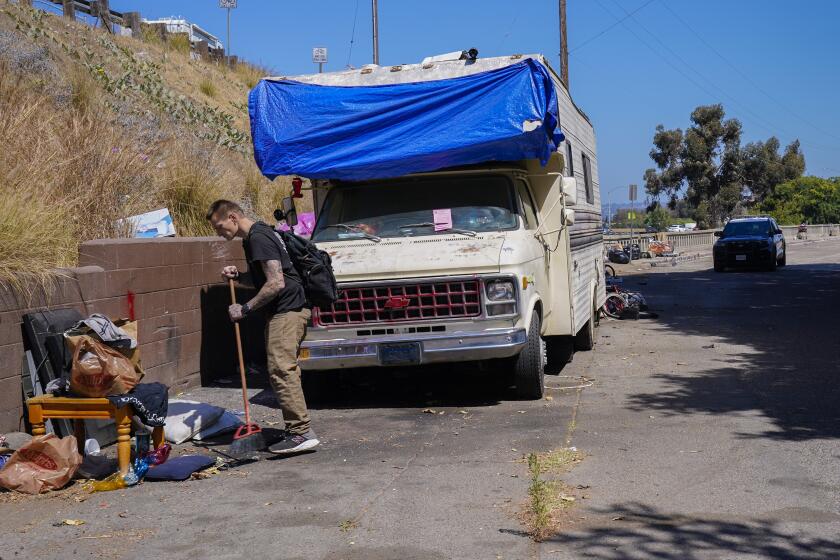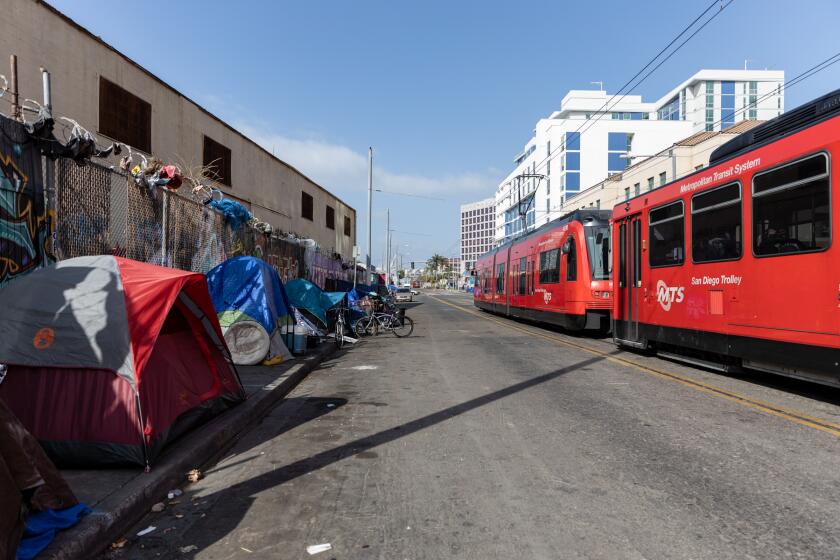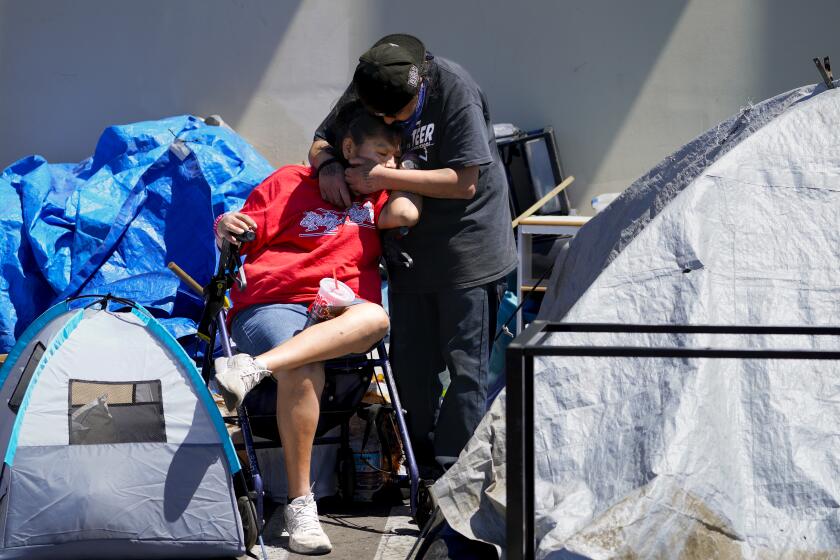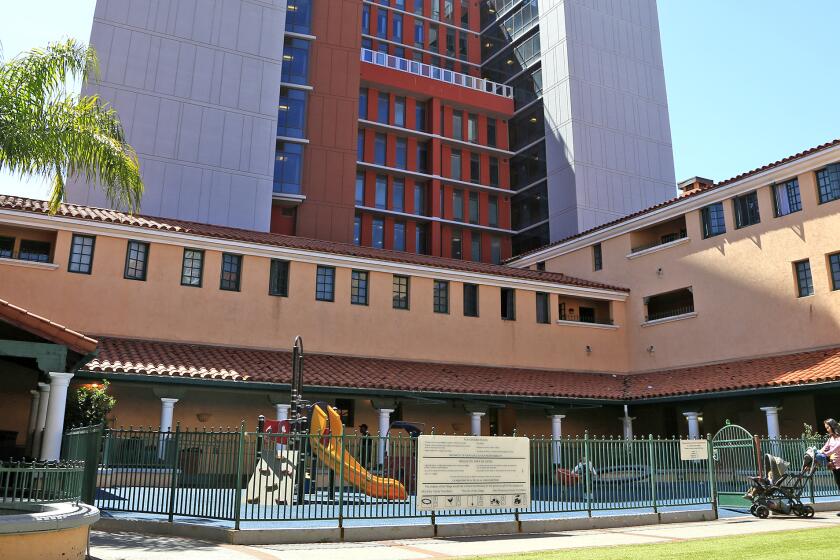Fatal shooting raises questions of police response to homeless
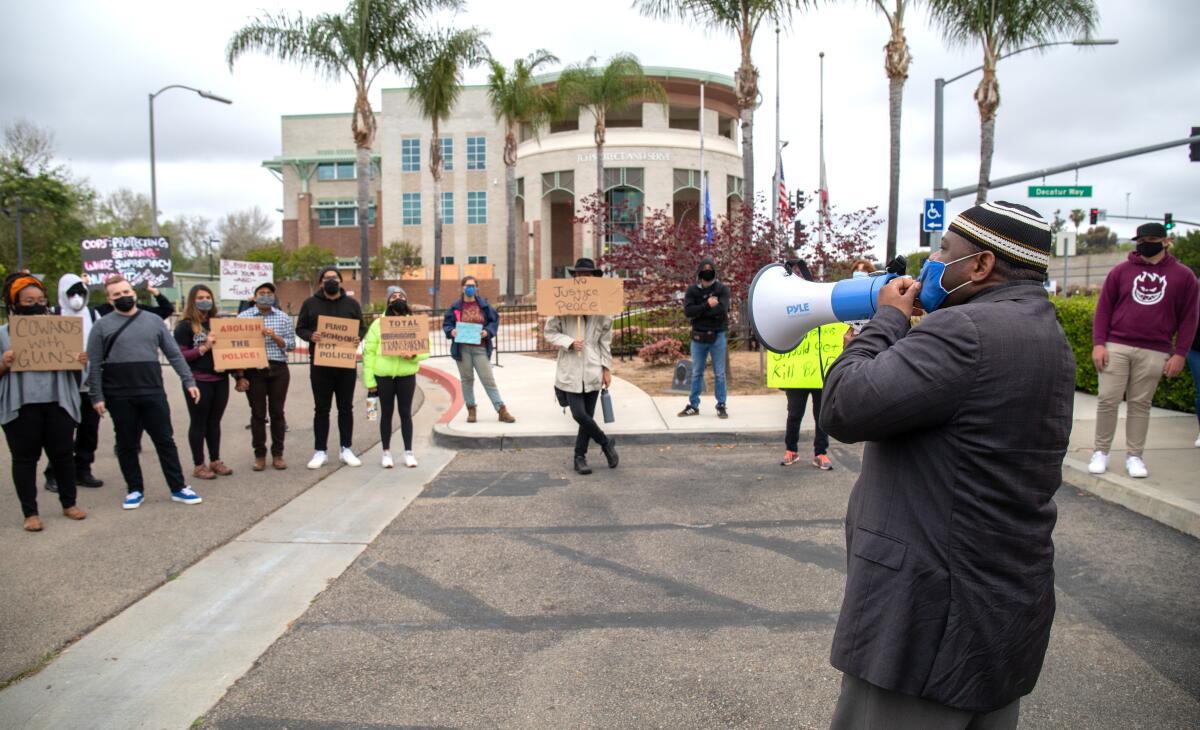
Officer responded to call of somebody striking vehicles with a metal rod; none found with any damage
The fatal police shooting Wednesday of a mentally ill homeless man once again exposes the difficulties of trying to balance a person’s right to choose how they live even when those choices put them and others at risk, homeless advocates said.
“I think it highlights the need for trauma-informed care for people on the street to avoid things like this happening,” said Greg Anglea, executive director of Escondido-based Interfaith Community Services. “We should not have to rely upon cops to be the first responders to mental health conditions. We really need to provide mental health specialists to be able to prevent these sort of things from happening and, when they do happen, to be there to support the response.”
Interfaith operates a shelter and other services for homeless people at its headquarters on West Washington Avenue, about a mile away from South Broadway and West Second Avenue, where the shooting occurred Wednesday shortly after 7 a.m. The man who was shot is believed to have been homeless with a history of mental issues.
“We’re all very sad,” Anglea said, adding that more people than usual arrived Thursday morning for a morning meal at their headquarters. “Our clients who are unsheltered are scared and upset.”
Police Chief Ed Varso said in a video Wednesday that officers were responding to a call of a man who was striking vehicles at the intersection with a metal rod. An officer opened fire when the man approached him in a threatening manner after receiving numerous commands to drop the object and several use-of-force warnings, Varso said.
While his name has not been released, Varso said the man was well-known by Escondido police, with 188 arrests since 2002 for offenses including “violent assaults on police and the public, parole violations, drug charges, vandalism and a host of other property crimes.”
Varso also said the police department’s Psychiatric Emergency Response Team had made numerous attempts to get the man into the mental health system.
“Here’s someone the police are saying was very well known to have mental health issues and was rotating through the system many times, and never got the help he needed,” said homeless advocate Michael McConnell, who was at demonstration in front of the Escondido Police Station Wednesday night. “He’s dead because our system failed him, plain and simple.”
As of Thursday, Escondido police had not released footage from the body cameras officers wore during the incident.
As police continue to investigate, department spokesman Lt. Kevin Toth said Thursday they have not found any cars damaged by the man. Toth said that one witness told police the man had been striking objects in a parking lot and had tampered with a parked car. Witnesses also told police his demeanor was threatening.
Toth also said that there was not a PERT unit working at the time of the incident.
Poway resident Linda Mimms, a National Alliance on Mental Illness-trained advocate for reforms to mental health policies, said the man’s numerous other contacts with PERT and his apparent reluctance to accept help is a reminder that there should be more opportunities to mandate mental health services for certain people.
“In our state we have a big problem in that we have huge constituencies that look at compassionate, involuntary care as a dirty word rather than a tool to help people who are in psychosis come back to reality,” she said, adding that once those people are stable they would be able to direct their own treatment.
“We’re letting people basically disintegrate on our streets, rot, and die,” she said.
San Diego County Supervisors agreed in 2015 to implement Laura’s Law, a statewide ordinance that allows authorities to order psychiatric treatment for people with mental illness, but it has been seldom used.
In 2018, supervisors agreed the county should consider participating in a pilot program that would make it easier for a judge to appoint a guardian or protector as a conservator for six months to make choices for a person with mental illness. To be eligible, a person would have to have had at least eight involuntary psychiatric hospitalizations under state Welfare and Institutions code 5150 over 12 months.
The program was not pursued after an analysis found the restrictions left only eight people in the county eligible.
The 1967 Lanterman-Petris-Short Act ended the practice of institutionalizing patients against their will in California, and state mental hospitals began to close that decade.
The federal government has prohibited funding of any mental institution with more than 16 beds since the 1960s, but Mimms said times have changed since then, and mental hospitals today can be operated more professionally and more compassionately. States also have been allowed to apply for a waiver to the federal funding prohibition, and Mimms said she’s frustrated that California has not. The recently introduced House Resolution 2611, the Increasing Behavioral Health Treatment Act, could lead to a return of federal funds.
Anglea said he is not comfortable with the idea of mandating treatment for homeless people with mental issues.
“It’s fraught with risks of taking people’s rights away and overstepping,” he said.
Anglea instead said more outreach specialists trained in trauma-informed care are needed to meet with people on the street. He also sees a need for more places for people on the street to go, such as a drop-in day center where they can meet with people who could lead them to help.
Coincidentally, the Escondido City Council on Wednesday night approved an $87,000 grant to fund a clinician and case manager to increase Interfaith’s homeless outreach to four people. Anglea said the fact that PERT officers had met many times with the man who was shot highlights the need for outreach specialist to meet with people on the street before they are in crisis, which is when PERT officers are called.
More beds for mental health care also are needed, he said.
In 2018, Tri-City Medical Center closed its heavily used 18-bed behavioral health unit and crisis stabilization unit, significantly limiting emergency psychiatric services in coastal North County.
In January 2020, the county Board of Supervisors approved $17 million to build a 16-bed behavioral health unit in Oceanside on land owned by the medical center. At the time, construction of the project was expected to take two to three years.
The county also plans to open a mental health hub in Hillcrest, but there is no set opening date for it.
“We’re doing everything we can go as fast as possible, but when you’re building medical-grade facilities, it just doesn’t happen as fast as i would like it to happen,” said County Board of Supervisors Chairman Nathan Fletcher.
In January, the county launched a Mobile Crisis Response Team made up of mental health clinicians, case manager and peer support specialist to respond to calls in North County.
Fletcher said ordering people into conservatorship is complex, and he sees the new mobile team, housing, hospital beds and continued mental health services as part of a series of steps that together can lead to an effective change to the system.
He called Wednesday’s shooting a tragic situation that likely involved someone who had been in need of serious intervention decades ago.
“It’s a powerful reminder of how much work we need to do,” he said.
Staff writer Teri Figueroa contributed to this article.
Get Essential San Diego, weekday mornings
Get top headlines from the Union-Tribune in your inbox weekday mornings, including top news, local, sports, business, entertainment and opinion.
You may occasionally receive promotional content from the San Diego Union-Tribune.

